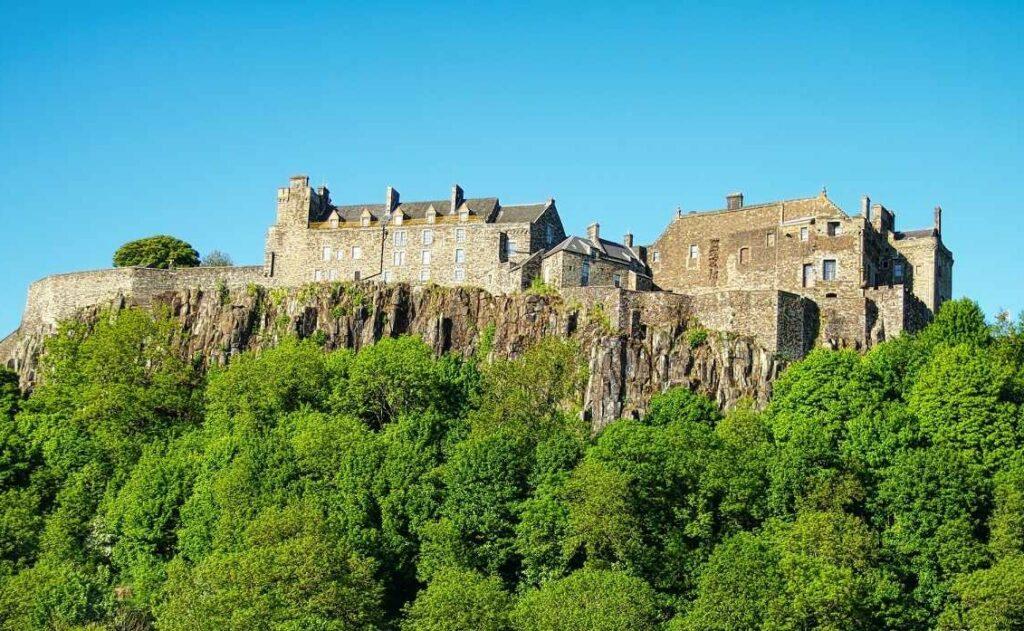Stirling tourist guide
Stirling, located in the heart of Scotland, is a historic city with a rich heritage, often referred to as the “Gateway to the Highlands”. Former capital of the Kingdom of Scotland, it is known for its central role in the Scottish Wars of Independence and for its impressive castle, which dominates the city from a rocky promontory. A blend of history, nature and culture, Stirling is a must-see destination for fans of Scotland’s past.

Why visit Stirling?
Stirling is a town on a human scale, with a rare density of major historic sites. Its castle is among the most important in Scotland, and the Wallace Monument on a nearby hill pays tribute to one of Scotland’s national heroes. In addition to its historical interest, Stirling offers a magnificent natural setting, with hills, rivers and hiking trails in the immediate vicinity. It’s also an excellent base for exploring both the Lowlands and the Highlands.
The must-haves
- Stirling Castle: One of the country’s most iconic castles, richly furnished and steeped in history.
- Wallace Monument: A neo-Gothic tower dedicated to William Wallace, with breathtaking views over the region.
- Old Town: The medieval town center, with its cobbled streets and ancient buildings.
- Bannockburn Heritage Centre: An interactive museum dedicated to the famous Battle of Bannockburn.
- Stirling Smith Art Gallery and Museum: a collection of objects and works of art tracing local history.
- Church of the Holy Rude: A historic church where James VI of Scotland was crowned.
Neighborhoods to explore
- Old Town: A historic quarter with medieval charm, panoramic views and an authentic atmosphere.
- Riverside: Bordered by the River Forth, perfect for a quiet stroll.
- Bridge of Allan: A neighboring town known for its elegant atmosphere, cafés and wooded paths.
- Kings Park: A leafy residential area ideal for relaxing.
Practical advice
| Aspect | Details |
|---|---|
| Transport | Accessible by train or car from Edinburgh or Glasgow; city center easily visited on foot. |
| Hosting | Hotels, B&Bs and inns available in and around the city. |
| Currency | Pound sterling (£). Credit cards are accepted everywhere. |
| Language | English with a strong Scottish accent possible. |
| Weather | Changeable: bring waterproof clothing, whatever the season. |
Where to eat?
- The Birds and the Bees: A local pub-restaurant renowned for its traditional Scottish cuisine.
- The Portcullis: Located near the castle, perfect for a meal in a cosy atmosphere.
- Brea: Modern Scottish cuisine featuring regional produce.
- Café Aina: A cosy café with good breakfasts and home-made pastries.
- The Allanwater Café: Famous for its fish and chips, in nearby Bridge of Allan.
When to leave?
Stirling can be visited all year round. Spring and summer are ideal for visiting the outdoor sites and enjoying the unobstructed views from the castle or the Wallace monument. Autumn reveals magnificent colors in the surrounding forests, while the quieter winter gives the town a peaceful atmosphere conducive to historical discovery.
Conclusion
Stirling is a Scottish gem where national history meets superb scenery. Less touristy than cities like Edinburgh or Inverness, it offers an authentic immersion in Scotland’s past, without the crowds. For history buffs, it’s a must-see destination, both majestic and accessible. Stirling is also the perfect link between the big cities of the south and the wild lands of the north.